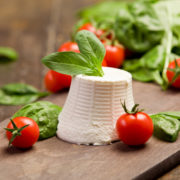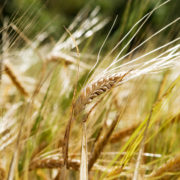Anti-inflammatory diet: AID VS SAD
Typical American diet is called Standard American Diet (in other words – not surprisingly abbreviated as ‘SAD”) includes too many simple sugars, alcohol, too many empty calories and also too many saturated fats and trans fats which is not good for our health. In general, the principles for a good Anti-Inflammatory Diet (‘AID”) are as follows:
1. Try to eat as much fresh quality organic food as possible and avoid packaged and processed foods and artificial sweeteners.
2. Protein intake should be from lean good sources of protein such as organic chicken, turkey, grass-fed meat, organic eggs, organic dairy (preferably – yogurt or kefir), nuts, legumes. It’s very important for the chicken, eggs and dairy products to be organic in order to avoid the excessive hormones and antibiotics intake.
3. The next step is to exclude simple sugars like “regular” white or brown sugar or, even worse – high fructose corn syrup and the products that have it – such as cookies, candies, cakes, ice cream and such. If you have sugar cravings it is ok to eat fruits and berries – they will provide enough sugar but along with other vitamins, fiber and nutrients, not just empty calories.
4. Stay away from soda, most commercial drinks and fruit juices because they all have high sugar content. The simple sugars causes a blood sugar spike, makes your pancreas to work hard, increase the propensity to gain weight, have heart diseases, diabetes and cholesterol problems, it promotes candida growth and inflammation.
5. For complex carbs use whole grains. These are the carbs that are absorbed into the bloodstream at a slower pace and do not increase you blood sugar levels as much. The examples of the complex carbs are brown rice, whole quinoa, buckwheat, old-fashioned oats, cooled potatoes legumes.
6. With regards to fat intakes it is extremely important to avoid processed food and any form of trans-fats. The trans fat is frequently added to processed and packaged foods – it is a substance that does not exists in the nature. It was designed by humans as a way to extend the shelf life of the packaged foods. The reason behind this is that even bacteria and fungi avoid it because they cannot digest it. Take the same approach – just read the labels carefully and don’t buy any product that has trans fats. It is not good for your body either.
7. Consume as little saturated fats as possible. The saturated fat contains mainly in animal products, such as meat and dairy and some commonly used cooking oils like corn, safflower and sunflower oils. It should be noted that contrary to some popular beliefs, a healthy diet should include a significant intake of fat. But there is a huge difference for the body between healthy (unsaturated or Omega-3 and Omega 9) and unhealthy (saturated or Omega-6) fats. Unfortunately, most people in the US use much more “bad” fats and not enough “good” fats than what is needed for their bodies.
One of a relatively easy way to improve this ratio is to start using avocado oil for cooking. Avocado oil is appropriate for high temperature applications, like grilling and stir-frying, while coconut oil could be used for the majority of other everyday cooking jobs, including baking to replace creamery butter. You may also use Canola oil as a source of omega-3 fatty acids – it and coconut oil can withstand temperature up to 350F. Olive oil is a good source of healthy Omega-9 fats and it should not be heated because it becomes saturated at higher temperatures. It is best to use high quality extra virgin cold pressed olive oil for salads, marinades and other non-heating applications.
8. Coconuts, avocadoes and nuts should be your best friends because they are tasty, easy to use and provide a nearly ideal balanced load of healthy fats, vitamins and other nutrients. It is recommended to eat at least a handful of nuts every day. BUT: stay away from peanuts – they are not real nuts and usually are loaded with dangerous pesticides. All other nuts – walnuts, pistachios, pecans, almonds, macadamia, pine nuts, cashews – are good.
9. Anti-Inflammatory diet should include much more fruits and vegetables than most Americans usually consume. There should be at least 7 servings of vegetables and about 3 servings of fruits per day (one serving is a standard measuring cup). Fifteen servings a day even better. Try to eat more raw vegetables (think of salads) and reduce your meat intake to 2-3 portions per week.
Of particular importance is to eat enough cruciferous vegetables – such as cabbage, broccoli, cauliflower, radish, daycon, kale. Only these products could provide the body with the right molecules for detoxifications and ensure a better protection from cancer and inflammatory diseases.
It is also advisable to eat more beets and pomegranates – these foods help the body to generate nitric oxide which is a powerful antioxidant that also improves circulation and blood flow to various organs by opening up blood vessels.
10. Fish has been traditionally considered as a much better choice for a healthy diet than meat or chicken. It is an excellent source of both good fats and proteins. However, now it’s time for a word of caution – the fish you could safely consume should be WILD CAUGHT. In New York it is required by law to indicate the country of origin for the fish and whether it is wild or farmed. Unfortunately, most of the commercially available fish is currently comes from farmed sources and most of the farmed fish has the very high content of saturated and trans fats, antibiotics and potential cancer-causing chemicals. To make the matter worse, even some of the prized wild fish may be also unsafe. The major concern is about the high (and continuously rising) level of mercury found in the wild fish. To better understand this concern you should note that even small amounts of mercury are gradually accumulated in the bodies during the lifetime and this process continues through the food chain. That’s why smaller wild caught fish poses much less risks in this respect than a large, predatory fish like tuna and swordfish.
Healthy tip: it is not easy to find a source for good quality, wild-caught safe fish – but the efforts are worth trying. Wild alaskan salmon is a good choice. It is moderately priced when sold frozen, also it is delicious and ready to eat when it comes pre-sliced in smoked form. Another Omega-3 “champion” is herring. A pickled one has long been a favorite staple in Scandinavian, German, Polish, Russian and Jewish cuisine and could be found in many ethnic food stores – just ask for it. Both wild salmon and herring are one the best sources of Vitamin D – for which many people are deficient.
11. While some of the products are still relatively safe to buy in regular stores, there are several conventionally grown foods that have high content of toxins and pesticides which makes them really dangerous for your health. This list is compiled annually and is referred to as the Dirty Dozen. Here is the most current one, with the highest harmful content on the top:
Please take your time to memorize this list because you should make every effort to buy ONLY ORGANIC products from this list. At the very least – you should treat them as covered with poisonous stuff – minimize the consumption of the non-organic fruits and vegetables from the list, wash them thoroughly and peel. An easy way to remember is that the “dirty dozen” produce have either very thin or no protection layer. Other conventional produce (like oranges and avocadoes) may be safer to eat not because of the better agricultural practices but simply due to their thicker skins. So it is not a bad idea to try to buy more food which is grown organically. It is more expensive but much more beneficial for your health to justify a premium. Another consideration – by buying organic food and boycotting the “dirty dozen” you not only protect your body and the health of your loved ones. You also send a strong message down the purchasing and marketing chain supporting better farming methods and this is the only real way to reduce the mass pollution and protect our land.
12. An extremely helpful advice which is often overlooked is to use more spices – literally, much more in terms of quantity and variety than what is customary in Standard American Diet (SAD) and what you are using now. There is a lot of spices – not only several varieties of red and black pepper, but also turmeric, cumin, cardamom, ginger, cinnamon, cloves and mustard – to name a few. They are relatively inexpensive and easy to use. The spices not only add flavor and make our food taste much better and more interesting. They work closely with our genes and immune system. Many of the spices are immune-modulators or immune-protectors, some of them have bactericidal features and are very effective against harmful bacteria or viruses, others help to activate and express “good” genes. Overall they are a valuable addition to a diet and an integral part of the anti-inflammatory diet. Don’t be afraid to improve your food by experimenting with spices.
13. It is advisable to provide an intake of so called “insoluble fiber”. This type of fiber gives good nutrients to the gut mucosa and helps it to stay very healthy and not permeable. The examples of such food would be potatoes, sweet potatoes and lentils which were initially had been cooked or grilled but then cooled down before eating. The reasoning is that when you cool down starchy vegetables, their fiber content is increasing three times and that makes them better for the gut health.
14. Every day you have to eat some sort of high quality fermented food – pickles, kimchi, sauerkraut (sour cabbage), kombucha drinks (a fermented tea) , organic yogurt or kefir. They introduce healthy beneficial bacteria to the gut flora which positively affects your immune system.
15. Try to limit your alcohol intake because from nutritional point it gives you a lot of empty calories and sugars. Alcohol promotes the growth of pro-inflammatory sugar-feeding bacteria which in turn begin to dictate human behavior and this is one of the major reasons why drinking becomes a strong habit and it is very difficult to get rid of it. On the other hand, after a period of alcohol avoidance the desire to drink it usually goes away as the bacterial replacement eventually happens. In any case, you should totally avoid heavy liquors (vodka, whiskey, brandy) and limit an intake of beer or wine to not more than 1-2 drinks per week. Some scientists believe that red wine is helpful in moderation.
16. Instead – drink more water and tea. The drinking water should be of good quality. Even as regular tap water in New York is usually safe from bacterial contamination it is still important to avoid an exposure to other pollutants and heavy metals. Drinking tea is another good way to consume water. You can easily find excellent teas of various flavors. So don’t be afraid to try something new. On the other hand coffee intake generally should be limited to one cup per day. If you need to drink more than 2 cups of coffee, especially in the afternoon – it may be a symptom of adrenal fatigue – a condition that needs special treatment.
17. The best way to ensure that you receive enough vitamins and minerals from food is to use so called ‘Rainbow Diet”. It means that in any given day you consume a variety of different foods and the more colors it has – the better. Another way to improve your diet is to use more seeds (like ghia, pumpkin, sunflower, hemp) and berries (both fresh and dry ones). Try to add them to your daily foods like yogurt and salads.
18. Strictly avoid ANY PRODUCTS with added artificial colors and flavors. There are many of them and if you see an attractive package with a list of ingredients that you cannot understand (like sodium benzoate/ glutamate/nitrite, potassium sorbate/bromate, Red, Yellow etc.) – stay away from it. Note that such things as caramel, caffeine, artificial vanilla, sacharine – are also dangerous artificial additives. They could cause a lot of unexpected health problems and contribute to continuous inflammation in your body.
19. A separate note about gluten vs. gluten-free diet. Gluten exists in wheat and rye, and therefore – in such products as bread, pasta, cookies and so on. They became an essential part of human diet but many studies suggest that the gluten may not be healthy or at least – safe for our bodies. More and more researchers believe that this applies to every person, not just ones who suffer from some degree of gluten sensitivity. The major concern is that gluten triggers inflammation of the intestinal wall which causes intestinal permeability or “leaky gut syndrome”. This, in turn activates an autoimmune reaction.
Therefore, a true Anti-Inflammatory diet should be gluten-free and this is a very important factor for an overall success. As the chronic inflammation goes away so do a lot of painful and unpleasant symptoms. While it may be not that easy to make a full switch to the Anti-Inflammatory diet described above, especially in the very beginning, its benefits are overwhelming and almost all of the people that I know who were able to stay the course are not willing to go back to “SAD”.








Leave a Reply
Want to join the discussion?Feel free to contribute!